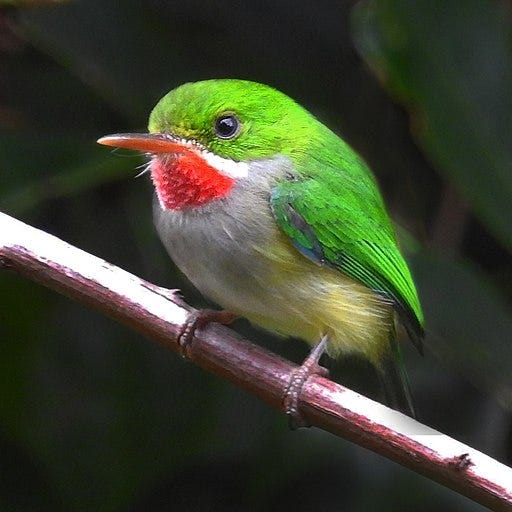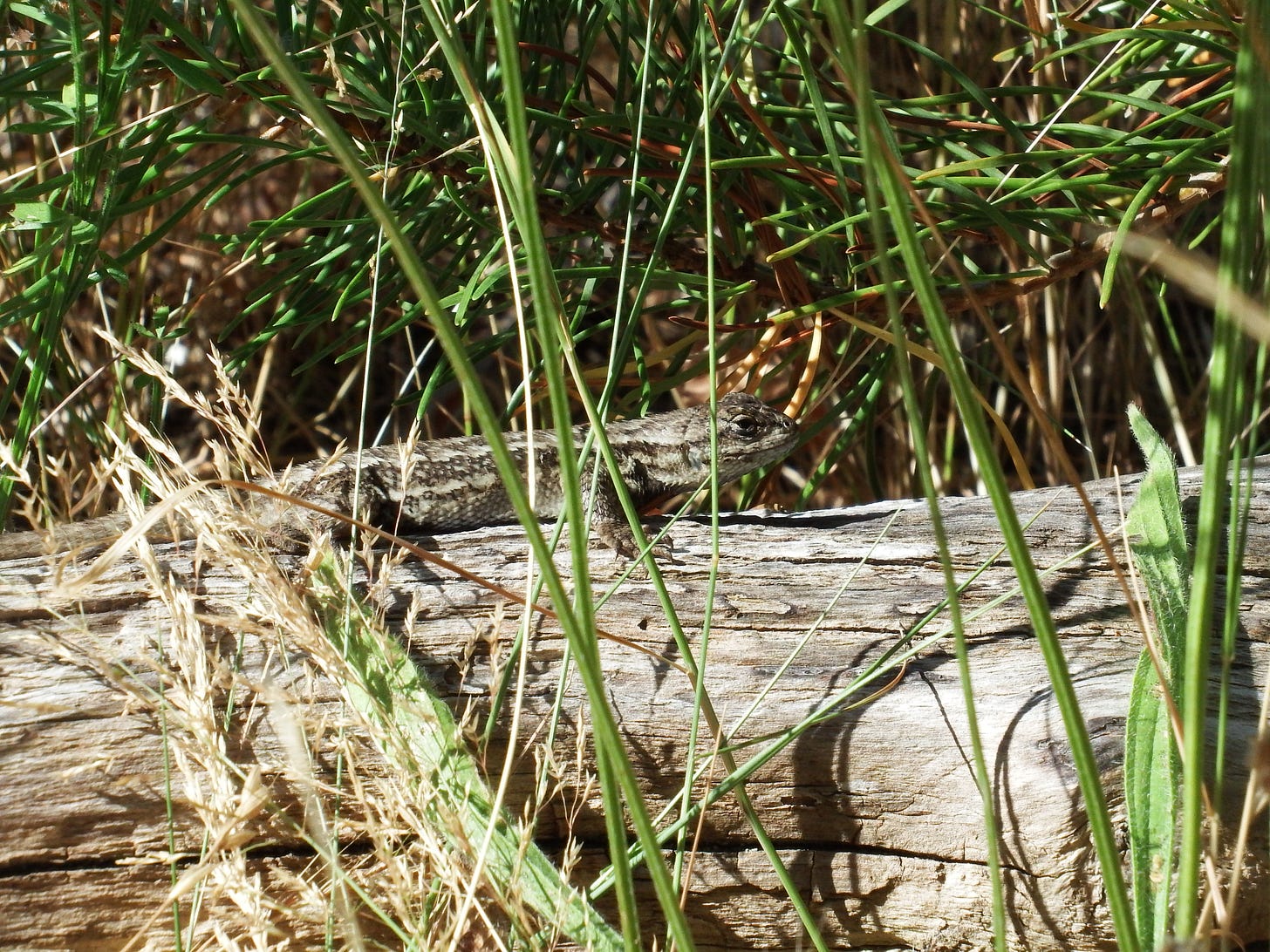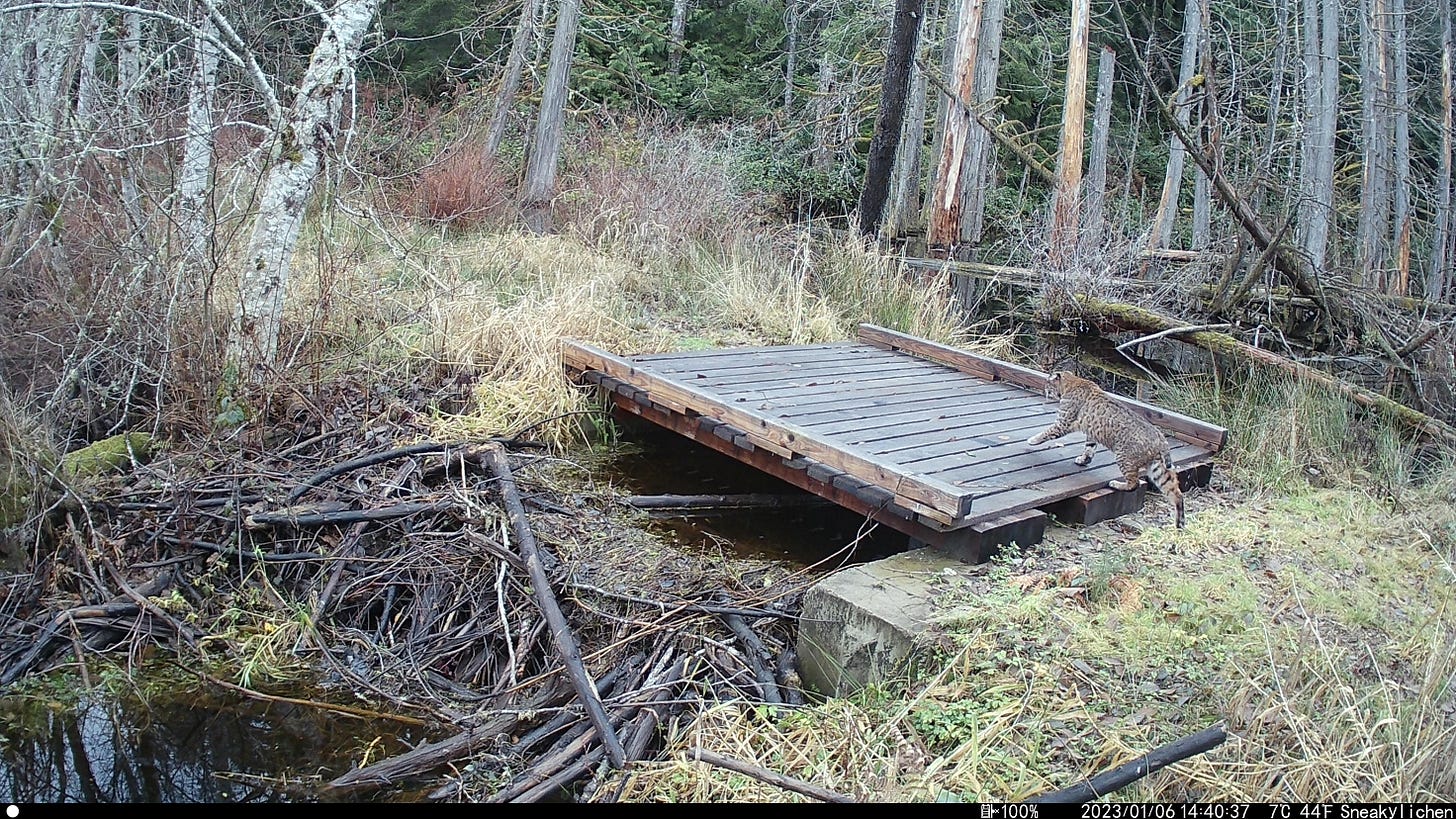First of all
Man, I feel like conservation story-threads are hanging off me like spiderwebs in September. So many loose ends. So many phone calls. I’ve unofficially declared 2022 the “year of the conservation easement” on the Key Peninsula, due to a series of major easements being finalized, and this year I’ll be visiting the forests, meeting the landowners, digging their stories. No two landscapes are just alike. Nor any two easements.
That, plus time with a coast-wide beekeeper who calls the KP one of his best nectaring grounds, a look into legislative maneuvers by a summer camp on a salmon stream slated for restoration, subtle changes to the county’s conservation futures program, and more. Will I even find time for the most important thing, talking about the weather?
Last week I went to Puerto Rico for a friend’s wedding and for once in my life I didn’t build an elaborate nature-seeking plan in advance. My attention was here. And that feels good.


Links
New Table of Contents page: links to all my past articles
My reporting on 2022’s conservation successes was front-page news this month.
Cougars swim long distances to island-hop.
My article in situ at KP News
And here it is, my first (and perhaps last) attempt at a listicle. You get a bonus version. At the last minute, the paper cut it to 15 critters and chopped up the intro due to space constraints. Here is the original.
The 16 Most Camouflaged Critters Around Puget Sound
Camouflaged creatures exploit psychology as much as terrain. Visitors pass through the Key Peninsula and notice only our impressive trees. Those who know the terrain well know how much can be concealed here. I am reminded of my reporting on homelessness, when one source said that many folks assume there is no homeless problem here because it is not sprawled across the streets: “It is so easy to hide on the KP.”
Our rural peninsula does offer a rich patchwork of forest, field, scrub and shore. Hiding places are everywhere. Yet it’s a lesson we must constantly learn: What’s in one place isn’t necessarily in another. As soon as we think we have a handle on what is before us, it is our mind filling the gaps rather than our eyes. This is exactly where these wild and sneaky animals like to live, right where we begin to make assumptions.
Here is my list of the 16 most camouflaged creatures that call the Key Peninsula home.
16. Brown creeper In an entourage of small winter songbirds, cheery and colorful, this bark-colored bird sticks close to the trunks of trees. It darts upward as it searches for spiders and can be found (by those with good hearing) by its double-noted call, which is nearly as high as a dog whistle.
15. Goldenrod crab spider This spider can be white or yellow and sometimes streaked with green or violet. It lives on flowers, its legs looking like stamens, and lies in wait for visiting pollinators to ambush. If it must move to another flower, it will secrete pigments to slowly change color to match its new home.
14. Western fence lizard The all-purpose checkered skin of fence lizards reminds me of army camo, the color scheme of grays, browns and blacks not only blending into its terrain of dirt, rocks, sand and logs, but obscuring the lizard’s outline, making it hard to pinpoint its parts.
13. Pacific chorus frog Also known as the Pacific tree frog, appearing in several color morphs to match the primary tones of its favorite haunts — moss green, dirt brown, rotting log red, and a morph with the ability to change colors — the chorus frog is maddeningly difficult to spy even when its song electrifies the night.
12. Brittle star In the intertidal zone, where every rough surface is crowded with critters that aren’t what they seem, I get an extra kick out of finding the sand-colored and nearly translucent arm of a bristle star sweeping slowly from under a rock, feeling for prey.
11. Azure butterflies While an argument could be made that sky-blue adult azures are camouflaged against the sky, it is their caterpillars and chrysalises that earn them a place on this list — with a shout-out to hundreds of equally cryptic caterpillars of other moth and butterfly species. Inseparable from the flowers on which they feed, like dogwoods and lupines, azure caterpillars look like tiny green, pink or white chitons. The brown chrysalises look like castoff leaf buds.
10. Decorator crab The body is canvas and garden for several species of decorator crabs. Carefully attaching small anemones, sponges and fronds of algae to its shell, a decorator crab looks like any other encrusted rock when it sits motionless. When it molts, it often picks the garden off its old shell and transfers it to the new.
9. Flying squirrel I am dying to see a flying squirrel. They are certainly around. Nocturnal tree-dwellers, much of their elusiveness has to do with spending their days motionless in treetops, but their brown and gray fur also vanishes against bark. It has recently been found that all of North America’s flying squirrel species fluoresce pink in ultraviolet light. No one knows why.
8. Wilson’s snipe With a shout-out to the many twig-colored female birds out there, it is hard to beat snipe for sneakiness. Four tan stripes run across feathers mottled with brown and charcoal. A snipe crouches in wetland grass, invisible until you draw near. Then it rockets away with a screech.
7. Bay pipefish / Penpoint gunnel In offshore beds of eelgrass, two fish look like diaphanous blades of grass. The bay pipefish, a seahorse relative, is bookended by a long snout and a tiny circular tail. The penpoint gunnel, an eel-like fish, has three color morphs to match the three color-zones of undersea vegetation: green in the shallows, mustard yellow beyond, and maroon in the depths.
6. Carolina grasshopper Of several grasshopper species on the KP, I choose the large Carolina grasshopper, identified by black wings with yellow margins, for its ability to disappear even when you have tracked where it landed. It comes in shades of rust, gray, tan and brown, a variation handy in a world that yearly shifts its palette. Recent research suggests that an individual grasshopper knows its specific hue and chooses its resting places accordingly.
5. Morel Experienced mushroom hunters remain tormented by morels on the KP. Already rare, their pitted forms can be impossible to spot in the dappled darkness of the forest. Plus, they look like pinecones — with a shout-out to another pinecone mimic, the bizarre groundcone, a parasitic plant — fortifying their camouflage with mimicry.
4. Giant water bug Camouflage helps predators as well as prey. I once watched a giant water bug swim to the bottom of a pond. The instant it glided to a stop in the old brown leaves collected there, transforming into another leaf, I understood how such a relatively large predator could operate by ambush. They even catch fish.
3. Bobcat Is it not incredible that this lynx cousin lives around us, stalking its territories and hunting rabbits and raising kittens without ever being seen? Master of silence, a bobcat’s spotted and striped fur helps it melt into tangled vegetation, where the outlines of objects are lost in ridiculous patterns of shadow and texture.
2. Starry flounder It takes a special sea critter to attempt to camouflage against the sandy bottoms that are far more common in Puget Sound than rocky reefs. The starry flounder flat-out succeeds, speckled like sand. Old-timers fished for them by walking barefoot in the shallows. You could not see a flounder before you stepped on it, and then it took every bit of gumption to quell the instinct to jump away from the large wriggling fish.
1. Moths I will brook no argument on this one. Various moths could take the top 50 spots on this list. Try finding a single resting moth the next time you walk in the woods, where they are abundant. Good luck.
Thanks for reading. Share if you’d like, and let me know your thoughts on this and future explorations. Farewell, listicle experiment.











